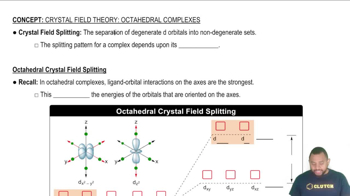Here are the essential concepts you must grasp in order to answer the question correctly.
Solubility
Solubility refers to the maximum amount of a solute that can dissolve in a solvent at a given temperature and pressure. In the case of KCl in water, solubility decreases as temperature decreases, meaning that less KCl can remain dissolved in water at lower temperatures. Understanding solubility is crucial for predicting whether a solution will remain homogeneous or if precipitation will occur upon cooling.
Recommended video:
Saturation Point
The saturation point is the stage at which a solution can no longer dissolve additional solute at a specific temperature. When a KCl solution is cooled, it may reach a saturation point where the dissolved KCl exceeds the solubility limit, leading to the formation of solid KCl crystals. Recognizing the saturation point helps in understanding the behavior of solutions as they undergo temperature changes.
Recommended video:
Crystallization
Crystallization is the process by which dissolved solute comes out of solution and forms solid crystals. As the KCl solution cools, the decrease in temperature can cause KCl to crystallize out of the solution if the concentration exceeds the solubility limit. This process is essential in many applications, including purification and the formation of solid salts from solutions.
Recommended video:
The crystal field splitting pattern for octahedral complexes has the d orbitals on or along the axes as having the higher energy.

 Verified step by step guidance
Verified step by step guidance


